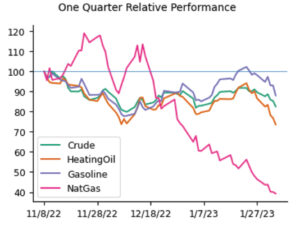In trading and investing, there are good losses and bad losses. This post is about the bad losses, but let’s begin by touching on the good losses.
 A good loss is simply part of doing business: you followed your rules perfectly, executed the trade entry and exit perfectly and on the correct size. Some trades just don’t work out; for many traders, less than half of all trades are profitable. These losses are not bad, are not to be avoided, and should not cause any emotional reaction. If you had a shoe store where you bought inventory and sold it for a significant profit, would you feel bad about spending money to buy shoes wholesale or would you understand that spending this money would allow you to make a lot more? This is how traders should think about good losses: a simple business expense.
A good loss is simply part of doing business: you followed your rules perfectly, executed the trade entry and exit perfectly and on the correct size. Some trades just don’t work out; for many traders, less than half of all trades are profitable. These losses are not bad, are not to be avoided, and should not cause any emotional reaction. If you had a shoe store where you bought inventory and sold it for a significant profit, would you feel bad about spending money to buy shoes wholesale or would you understand that spending this money would allow you to make a lot more? This is how traders should think about good losses: a simple business expense.
Now, getting there is not easy. I’ve written before that I think the typical path to trading/investing skill takes somewhere around 3-5 years. You may have some flashes of success early on (or you may not, and neither predicts your eventual success), but you are very unlikely to develop skills to be consistent in less time. Trading is a commitment, and it’s certainly not easy. Along the way, traders struggle with losses for “not so good reasons.”
Most of the “bad losses” are driven by a mistake—a mistake of methodology, emotion, execution error, perception, or something else. For the developing trader, a bad loss is often an invitation to do something worse and to do more damage to yourself. Don’t do that! Break the cycle. When you realize you are in the midst of one of these bad losses, simply correct the condition that caused it and don’t throw good money after bad. So many of the disasters that wipe out trading accounts begin as a small mistake that is compounded, through a series of errors, into an account-destroying screw up.
Now, let’s think about some of the reasons for these bad losses, and see what we can do about them:
- Your method or system doesn’t work. This is a big one, and one of the hardest to fix. If you’re buying random stocks based on chatroom tips, that won’t work. If you’re buying based on what you think about the news, that won’t work. If you’re using some untested technical pattern, that won’t work. The only way you can build enduring success is to have a system that is your own and in which you fully understand the edge and variability of the system results. The only way (that I know) to do this is either to be taught such a system in enough detail that you own it, or do develop your own. Finding a system that works is not easy. I think most traders who fail probably failed because they were doing something that didn’t work and couldn’t work.
- You are impatient and take impulse trades. So, you have a system and it works, but if you don’t have the patience to wait for setups, then you essentially don’t have a system at all! Too many traders force trades or execute trades out of boredom. Don’t do this—it will destroy whatever edge you have in your system.
- You take trades on the wrong size. Any trading methodology depends on the balance of a large number of winners and losers. If you are randomly doing some trades bigger and some smaller, you can easily wipe out that edge. (On the other hand, some traders do make good, disciplined use of varying position sizes, but this is also a well-developed and tested part of their methodology.) Be consistent and disciplined in everything you do; that’s why the market pays you.
- You ignore stops. What do you do when a trade hits your stop? You get out. End of story. If you can’t develop this one skill, you can’t be a trader. You cannot afford, even once, to ignore your stop. Maybe the trade will work out this one time; maybe your prayers will be heard and the bad loss will turn around and become a winner? Ok, great, now what? Now you’ve just had a serious break of discipline and have had a bad learning experience as well because you got paid to do something wrong! The ongoing impact of a mistake like this and the false learning will ripple through your trading career for months or years. Don’t do this—respect your stops.
- You get out of winning trades without any reason. I think this is one of the great, underappreciated problems of learning to trade. Many people can develop the discipline to respect their stops, but then cave under the pressure of a winning trade. The thought of a winning trade reversing and giving back profit, the pressure of knowing the open winning trade would cover many losing trades, or the simple greed of wanting to ring the cash register—these can be overwhelming psychological pressures. It’s just as important to manage your winners with discipline, and that your trading plan has clear rules for when and how you get out of winning trades as well as losers.
The solution to most of these problems is not exciting: have a plan that works and execute that plan with discipline. Of course, there’s a lot more we can do at each step, but being aware of these errors will help protect against some of the worst, and most avoidable, mistakes that wait for the developing trader.



Pingback: 11/14/16 – Monday’s Interest-ing Reads | Compound Interest-ing!
Pingback: Top Trading Articles Week: 11/14/16 - New Trader U -
So, you have a system and it works, but if you don’t have the patience to wait for setups, then you essentially don’t have a system at all! — I am struggling with the problem. I can not draw a clear line about what is my system. I saw five good looking charts, then I picked 3 to buy. 1 appear to be chasing a little. (1 dollar after my idea entry). Then this one made me money. Out of so many possibility choosing one chart is very hard, and I do not know how a system work with picking one chart out of so many:( Then I decide I just pick the first 3 I saw. Then 4th one showed up with a perfect entry, what do I do now:( I decided to be discipline not take the trade. I will see the result after 2 months.
Right now this is my biggest problem. I do not know how to make it very clear what my system in front of so many opportunities. Should I add a tighter filter system such as only trade if volume is bigger than xyz, so my watchlist become smaller?
thanks a lot for this post. I have all the problem you have listed above:) random size. I do not have problem getting out of trades, but once in a long time, I will let find reasons not to respect my stop:( … getting out trades with no reason. sigh… I always find reasons to get out.:( previous high, already 15%, previous resistance. All these were my rules, but after I got out, price fly away. now I am trying sell half strategy
such a fine line between impulse trade and instant reaction:( I can not tell these 2 apart. now my new rule only trade if I follow a stock at least 30 minutes.
Pingback: Dash of Insight| Weighing the Week Ahead: Possible Stimulus and How to Pay
Pingback: Weighing The Week Ahead: Possible Stimulus And How To Pay | 4financenews.com
Pingback: Today's bits: 5 bad things people do with their 401(k); 12 things that successful married couples due - Dollar Bits
Pingback: Short Week Without Much Data - TradingGods.net